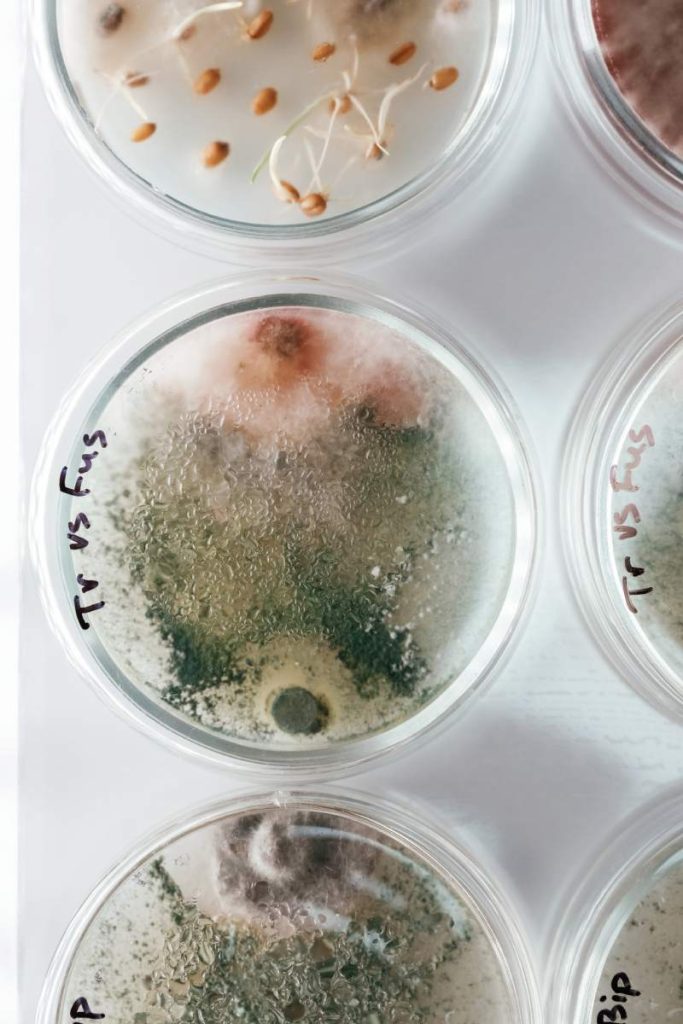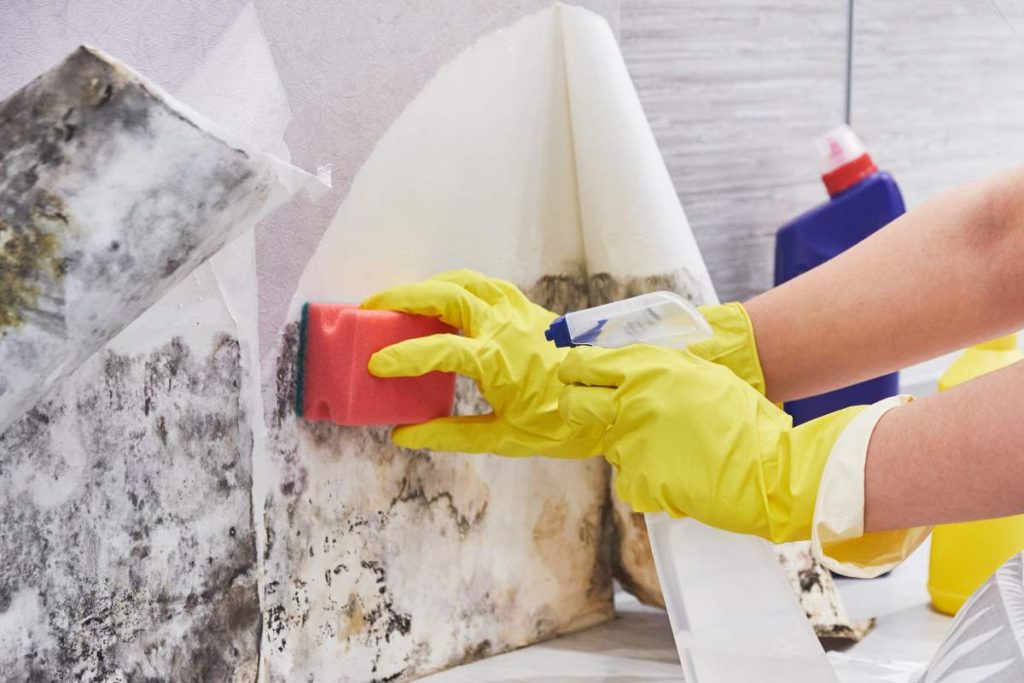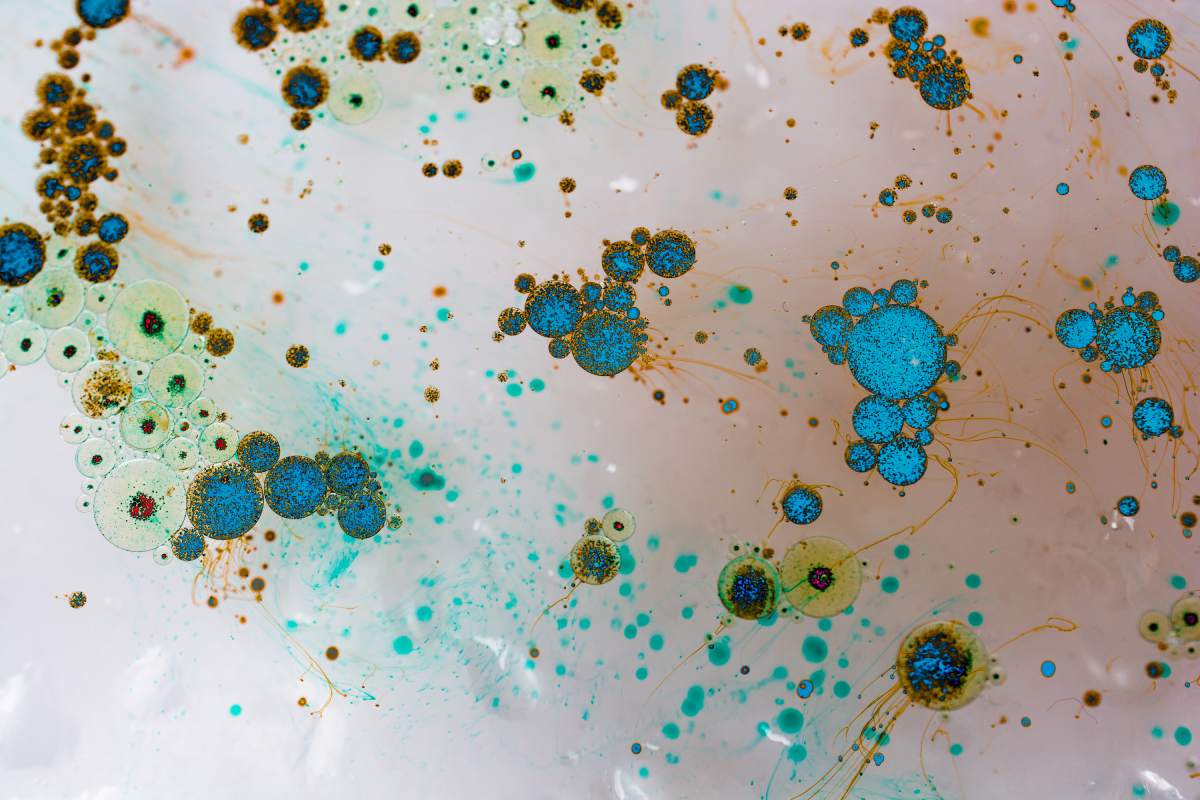Mould and mildew are common household problems that thrive in damp and humid environments. Both are types of fungi, but they differ in appearance, health risks, and methods of treatment.
While they might seem interchangeable, understanding the distinction is essential for proper removal and prevention.
This article will explore the key differences between mould and mildew, their potential health hazards, and the most effective treatment methods.
What is Mould?
Mould is a type of fungus that grows in the form of multicellular filaments called hyphae. It tends to appear on surfaces that are continuously exposed to moisture, such as walls, ceilings, and floors, especially in bathrooms, kitchens, and basements. Mould comes in various colours, including black, green, brown, and even orange. Unlike mildew, it often has a fuzzy or slimy texture.
Some common mould species include:
- Aspergillus: Found indoors and outdoors, often in decaying organic matter.
- Cladosporium: A black or green mould that can grow in cool areas.
- Stachybotrys chartarum: Also known as “black mould,” it can cause serious health issues if left untreated.
Mould penetrates the surface it grows on, making it harder to remove. It can damage the structure of your home and decor, causing wood to rot and weakening plaster or drywall.
What is Mildew?
Mildew, on the other hand, is a specific type of mould, generally used to describe fungal growth that remains on the surface of materials, especially in areas like bathrooms and laundry rooms. It is usually flat, powdery, and appears in white, grey, or yellow patches. Mildew is often found on fabric, leather, paper, and other organic surfaces that are kept in moist, poorly ventilated spaces.
Unlike mould, mildew is relatively easy to remove because it grows superficially. However, it can still pose health risks and damage the surfaces it inhabits.
Key Differences Between Mould and Mildew

- Appearance: Mould is typically fuzzy or slimy, appearing in a wide range of colours, while mildew is powdery and usually white or grey.
- Texture: Mould feels thick and can be either wet or dry, whereas mildew is lighter and flatter.
- Growth Pattern: Mould infiltrates the surface and spreads deeper, while mildew tends to stay on the surface.
- Location: Mould grows in areas with prolonged moisture exposure, such as behind walls, beneath floors, and on ceilings. Mildew grows on surface materials, especially in damp, dark corners, on fabrics, and bathroom tiles.
Health Hazards of Mould and Mildew
Both mould and mildew can present significant health risks, particularly for those with weakened immune systems, allergies, asthma, or respiratory conditions.
Mould-Related Health Risks
The health hazards associated with mould are more severe than those of mildew, especially with prolonged exposure. Some of the potential health risks include:
- Respiratory Issues: Breathing in mould spores can cause shortness of breath, wheezing, and coughing. This is particularly dangerous for individuals with asthma or chronic respiratory conditions.
- Allergic Reactions: Mould can trigger allergic responses such as sneezing, runny nose, and itchy eyes. Individuals who are allergic to mould may also experience skin rashes or hives.
- Toxic Effects: Certain types of mould, like Stachybotrys chartarum (black mould), can produce mycotoxins, which can have toxic effects on humans. Mycotoxins are linked to severe health issues, including headaches, chronic fatigue, and memory loss.
- Infections: People with weakened immune systems are particularly vulnerable to mould infections. In rare cases, invasive mould can cause lung infections like aspergillosis.
Mildew-Related Health Risks
While mildew is less dangerous than mould, it still poses health risks:
- Mild Allergic Reactions: Mildew can trigger mild allergic reactions, including sneezing, coughing, and skin irritation. Individuals with a sensitivity to mildew might experience more severe symptoms over time.
- Respiratory Irritation: Prolonged exposure to mildew can irritate the respiratory system, though the effects are generally less severe than mould.
Treating Mould and Mildew
Prompt treatment of mould and mildew is crucial to minimize health risks and prevent further damage to your home. Here are effective methods to treat each type of fungal growth:
Treating Mould
- Identify the Source of Moisture: Since mould thrives in damp environments, finding and fixing the moisture source is crucial. This could mean repairing a leaky pipe, improving ventilation, or addressing issues with water damage.
- Use a Mould Cleaner: Commercial mould cleaners are available, but a solution of water and bleach (1 cup of bleach to 1 gallon of water) is a common DIY option. Apply the solution to the affected area, scrub with a brush, and rinse thoroughly. Be sure to wear gloves, a mask, and goggles to protect yourself from mould spores.
- Remove Infested Materials: In severe cases, you may need to remove mouldy materials entirely. This could involve tearing out sections of drywall, insulation, or flooring that are beyond saving.
- Improve Ventilation: After removing the mould, it’s essential to prevent future growth by improving air circulation and reducing humidity. Installing exhaust fans, using dehumidifiers, and ensuring windows and doors are adequately sealed can help.
- Hire Professionals: If the mould problem is extensive, hiring professional mould removal services is advisable. They have the expertise and equipment to ensure safe and thorough removal, especially when dealing with toxic black mould.
Treating Mildew
- Clean with Vinegar or Baking Soda: Mildew is generally easier to remove than mould. For small patches, a solution of white vinegar or baking soda mixed with water can effectively clean the affected area. Simply apply the solution, scrub gently with a brush or sponge, and wipe clean.
- Use Mildew-Specific Cleaners: There are commercial products designed to remove mildew from surfaces, including bathroom tiles, grout, and fabrics. Be sure to follow the instructions and safety precautions.
- Air Dry the Area: After treating the mildew, ensure the area is completely dry to prevent future growth. Open windows, use fans, or install a dehumidifier to reduce moisture levels in the room.
- Dispose of Contaminated Materials: If mildew has affected fabrics or porous materials like books, you may need to dispose of them if cleaning is ineffective.

Preventing Mould and Mildew Growth
Prevention is key to keeping mould and mildew at bay. Here are some steps you can take:
- Control Humidity Levels: Use dehumidifiers in areas prone to moisture, like basements and bathrooms. Aim for humidity levels between 30-50% to reduce fungal growth.
- Fix Leaks Promptly: Address any leaks in your home, whether from plumbing or the roof, as soon as possible to avoid creating a moisture-rich environment.
- Ventilate Rooms: Proper ventilation is crucial in areas that tend to get damp, such as kitchens and bathrooms. Install exhaust fans, and ensure windows can open to allow airflow.
- Clean Regularly: Regular cleaning, especially in high-moisture areas, can prevent the buildup of mildew and mould spores.
Conclusion
Though mould and mildew may seem similar, their differences in appearance, growth patterns, and health risks are significant. Mould, particularly black mould, poses a greater threat to health, while mildew is easier to clean but still requires attention.
Understanding these differences allows you to treat these fungi effectively and protect your home and health. Proper cleaning, moisture control, and ventilation are key to preventing future fungal growth.

